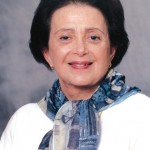Many people know that heart disease is currently the number one killer of women in the United States. But a little more than a half a century ago it was widely believed that cardiovascular disease only affected men. Renowned cardiologist, Nanette K. Wenger, MD, challenged this theory and thanks to her pioneering efforts over the last 50 years women today know better.
Wenger, a professor of medicine in the division of cardiology at Emory University School of Medicine and former chief of cardiology at Grady Memorial Hospital, is being honored as the 2010 Georgia Woman of the Year for her lifetime commitment to reducing women’s disability and death from cardiovascular disease.
She joins the ranks of other distinguished Georgia women including First Lady Rosalynn Carter who was named the first Georgia Woman of the Year in 1996 by the Georgia Commission on Women. In addition to this prestigious accolade, Wenger has accumulated dozens of awards throughout her celebrated career including the Lifetime Achievement Award from the American College of Cardiology in 2009. She is a sought after lecturer for issues related to heart disease in women, heart disease in the elderly, cardiac rehabilitation, coronary prevention and contemporary cardiac care.









 t want a transplant or those who may be transplant eligible in the future.â€
t want a transplant or those who may be transplant eligible in the future.â€


